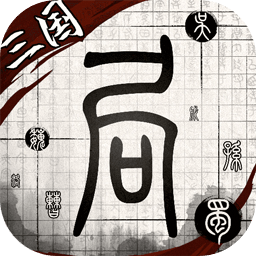最新下载
热门教程
- 1
- 2
- 3
- 4
- 5
- 6
- 7
- 8
- 9
- 10
ios开发中UIDatePicker 的一些用法
时间:2022-11-14 22:15:41 编辑:袖梨 来源:一聚教程网
例子
| 代码如下 | 复制代码 |
|
|
|
日期范围属性中任何一个未被设置,则默认行为将会允许用户选择过去或未来的任意日期。这在某些情况下很有用处,比如,当选择生日时,可以是过去的任意日期,但终止与当前日期。
选取器的高度始终是216像素
NSDate的常用用法
1. 创建或初始化可用以下方法
用于创建NSDate实例的类方法有
+ (id)date;
返回当前时间
+ (id)dateWithTimeIntervalSinceNow:(NSTimeInterval)secs;
返回以当前时间为基准,然后过了secs秒的时间
+ (id)dateWithTimeIntervalSinceReferenceDate:(NSTimeInterval)secs;
返回以2001/01/01 GMT为基准,然后过了secs秒的时间
+ (id)dateWithTimeIntervalSince1970:(NSTimeInterval)secs;
返回以1970/01/01 GMT为基准,然后过了secs秒的时间
+ (id)distantFuture;
返回很多年以后的未来的某一天。
比如你需要一个比现在(Now)晚(大)很长时间的时间值,则可以调用该方法。测试返回了4000/12/31 16:00:00
+ (id)distantPast;
返回很多年以前的某一天。
比如你需要一个比现在(Now)早(小)大很长时间的时间值,则可以调用该方法。测试返回了公元前0001/12/31 17:00:00
用于创建NSDate实例的实例方法有
- (id)addTimeInterval:(NSTimeInterval)secs;
返回以目前的实例中保存的时间为基准,然后过了secs秒的时间
用于初始化NSDate实例的实例方法有
- (id)init;
初始化为当前时间。类似date方法
- (id)initWithTimeIntervalSinceReferenceDate:(NSTimeInterval)secs;
初始化为以2001/01/01 GMT为基准,然后过了secs秒的时间。类似dateWithTimeIntervalSinceReferenceDate:方法
- (id)initWithTimeInterval:(NSTimeInterval)secs sinceDate:(NSDate *)refDate;
初始化为以refDate为基准,然后过了secs秒的时间
- (id)initWithTimeIntervalSinceNow:(NSTimeInterval)secs;
初始化为以当前时间为基准,然后过了secs秒的时间
2. 日期之间比较可用以下方法
- (BOOL)isEqualToDate:(NSDate *)otherDate;
与otherDate比较,相同返回YES
- (NSDate *)earlierDate:(NSDate *)anotherDate;
与anotherDate比较,返回较早的那个日期
- (NSDate *)laterDate:(NSDate *)anotherDate;
与anotherDate比较,返回较晚的那个日期
- (NSComparisonResult)compare:(NSDate *)other;
该方法用于排序时调用:
. 当实例保存的日期值与anotherDate相同时返回NSOrderedSame
. 当实例保存的日期值晚于anotherDate时返回NSOrderedDescending
. 当实例保存的日期值早于anotherDate时返回NSOrderedAscending
3. 取回时间间隔可用以下方法
- (NSTimeInterval)timeIntervalSinceDate:(NSDate *)refDate;
以refDate为基准时间,返回实例保存的时间与refDate的时间间隔
- (NSTimeInterval)timeIntervalSinceNow;
以当前时间(Now)为基准时间,返回实例保存的时间与当前时间(Now)的时间间隔
- (NSTimeInterval)timeIntervalSince1970;
以1970/01/01 GMT为基准时间,返回实例保存的时间与1970/01/01 GMT的时间间隔
- (NSTimeInterval)timeIntervalSinceReferenceDate;
以2001/01/01 GMT为基准时间,返回实例保存的时间与2001/01/01 GMT的时间间隔
+ (NSTimeInterval)timeIntervalSinceReferenceDate;
以2001/01/01 GMT为基准时间,返回当前时间(Now)与2001/01/01 GMT的时间间隔
4. 将时间表示成字符串
- (NSString *)description;
以YYYY-MM-DD HH:MM:SS ±HHMM的格式表示时间。
其中 “±HHMM” 表示与GMT的存在多少小时多少分钟的时区差异。比如,若时区设置在北京,则 “±HHMM” 显示为 “+0800″
关于NSTimeZone:
| 代码如下 | 复制代码 |
|
NSTimeZone* timename = [ [ NSTimeZone alloc] initWithName:names ]; ---------------------------------------- NSDateFormatter *formatter= [[NSDateFormatter alloc] init]; |
|
现在loctime就是指定时区的时间字符串了
-----------------------------------------
无论用户设置的是12小时制还是24小时制,如何获得24小时制的时间?
| 代码如下 | 复制代码 |
|
----------------------------------------- NSDateFormatter * formatter= [[NSDateFormatter alloc] init]; |
|
这里要注意的是formatter的格式,如果是小写的”hh”,那么时间将会跟着系统设置变成12小时或者24小时制。大写的”HH”,则强制为24小时制。
相关文章
- 崩坏星穹铁道驭空怎么培养 12-30
- 职教云官网登录-职教云平台一键登录 12-30
- 漫蛙如何下载安装最新版本-漫蛙漫画网APP官方下载地址安全版 12-30
- 阴阳师不知火阿离技能怎么样 12-30
- 原神凝光有什么培养方法 12-30
- 职教云登录入口-职教云课堂一键登录入口 12-30














